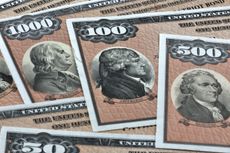3 Quirky ETFs Beat the Market
Funds that target insider buying, spinoffs and share buybacks look appealing.

The world of exchange-traded funds is crowded with investments you don't need. Most of this dead timber relies on investing gimmickry or has an absurdly narrow focus. Case in point: AirShares EU Carbon Allowances Fund, a short-lived ETF that tracked the prices of futures contracts on carbon allowances created by Europe's cap-and-trade system for controlling pollution. Thankfully, this dud's sponsor recently shut it down.
But some quirky ETFs show promise. Three funds that follow sound, if narrow, investing strategies are trouncing Standard & Poor's 500-stock index so far this year: Claymore/Beacon Spin-Off (symbol CSD), Claymore/Sabrient Insider (NFO) and PowerShares Buyback Achievers (PKW).
The spinoff fund led the group, gaining 40% year-to-date through September 4, compared with a 15% return for the S&P 500. The fund tracks a Beacon Indexes benchmark that follows 40 companies that have been spun off recently from their parent firms.

Sign up for Kiplinger’s Free E-Newsletters
Profit and prosper with the best of expert advice on investing, taxes, retirement, personal finance and more - straight to your e-mail.
Profit and prosper with the best of expert advice - straight to your e-mail.
Investing in spinoffs is a sound strategy because managers of jettisoned companies need to work hard to thrive. "These companies tend to be more efficient, more focused and more independent than their parent companies," says Christian Magoon, president of Claymore Securities. At last report, the ETF had 29% of its assets in technology stocks.
The Insider ETF has earned 32% so far in 2009. The fund tracks an index of companies whose earnings estimates have recently been increased and whose top executives and directors have been buying stock on the open market. "There are a lot of reasons why insiders sell, but there's really only one reason why they buy," Magoon says.
Because the fund weights each of its 100 holdings equally, rather than by market capitalization, it's biased toward smaller companies; it recently stashed 77% of its assets in small-cap stocks. That's certainly helped performance lately compared with large-cap indexes, such as the S&P 500, but the ETF's 2009 returns also look good next to the 15% advance of the Russell 2000 index, which tracks small-company stocks.
The broadly diversified PowerShares Buyback Achievers fund gained 20% year-to-date. It invests in companies that have repurchased at least 5% of their outstanding shares (after factoring in issuance of new shares and stock-option compensation) over the 12 months leading up to the ETF's annual reconstitution. The fund is well diversified among sectors, and it holds about 330 stocks.
Still, investors shouldn't assume these funds have discovered the holy grail of stock picking. The funds are just rounding their third birthdays, and only the Insider fund is beating its index over its lifetime -- from its September 2006 inception through September 4, the fund lost an annualized 1%, while the S&P 500 and the Russell 2000 shed 6% and 7% annualized, respectively.
Moreover, ETF investors need to guard against more than just bad performance. Industry watcher Ron Rowland publishes "ETF Deathwatch," a monthly list of funds with little to no trading volume (www.investwithanedge.com), and both the Spin-Off and the Buyback Achievers funds are on the latest list.
Rowland's concern is that Claymore and PowerShares could shutter the tiny funds, which likely aren't making a profit for the firms. Such a closing could trigger unwanted transaction costs and tax implications for investors. Plus, Rowland says, an absence of trading volume implies that the funds' "prices may not be tracking their underlying value very closely."
You should give these funds more time to prove themselves, and collect assets, before you consider investing. But it's some comfort to know that not every quirky ETF has been a bust from the get-go.
Editor's note: This story originally appeared on the Web as a Fund Watch August 4, 2009.

-
 Why Taiwan Semiconductor Stock Is Falling After Earnings
Why Taiwan Semiconductor Stock Is Falling After EarningsTaiwan Semiconductor beat expectations for the first quarter but its stock is notably lower. Here's why.
By Joey Solitro Published
-
 Strategies to Optimize Your Social Security Benefits
Strategies to Optimize Your Social Security BenefitsTo maximize what you can collect, it’s crucial to know when you can file, how delaying filing affects your checks and the income limit if you’re still working.
By Jason “JB” Beckett Published
-
 Best Banks for High-Net-Worth Clients
Best Banks for High-Net-Worth Clientswealth management Kiplinger's 2023 list of the best banks for higher-net-worth clients.
By Lisa Gerstner Published
-
 Stock Market Holidays in 2024: NYSE, NASDAQ and Wall Street Holidays
Stock Market Holidays in 2024: NYSE, NASDAQ and Wall Street HolidaysMarkets When are the stock market holidays? Take a look at which days the NYSE, Nasdaq and bond markets are off in 2024.
By Kyle Woodley Last updated
-
 Stock Market Trading Hours: What Time Is the Stock Market Open Today?
Stock Market Trading Hours: What Time Is the Stock Market Open Today?Markets When does the market open? It's true the stock market does have regular hours, but trading doesn't necessarily stop when the major exchanges close.
By Michael DeSenne Last updated
-
 Bogleheads Stay the Course
Bogleheads Stay the CourseBears and market volatility don’t scare these die-hard Vanguard investors.
By Kim Clark Published
-
 I-Bond Rate Is 5.27% for Next Six Months
I-Bond Rate Is 5.27% for Next Six MonthsInvesting for Income I-Bonds issued November 1, 2023 through April 30, 2024 will have a rate of 5.27%.
By David Muhlbaum Last updated
-
 What Are I-Bonds?
What Are I-Bonds?savings bonds Inflation has made Series I savings bonds enormously popular with risk-averse investors. So how do they work?
By Lisa Gerstner Last updated
-
 This New Sustainable ETF’s Pitch? Give Back Profits.
This New Sustainable ETF’s Pitch? Give Back Profits.investing Newday’s ETF partners with UNICEF and other groups.
By Ellen Kennedy Published
-
 As the Market Falls, New Retirees Need a Plan
As the Market Falls, New Retirees Need a Planretirement If you’re in the early stages of your retirement, you’re likely in a rough spot watching your portfolio shrink. We have some strategies to make the best of things.
By David Rodeck Published